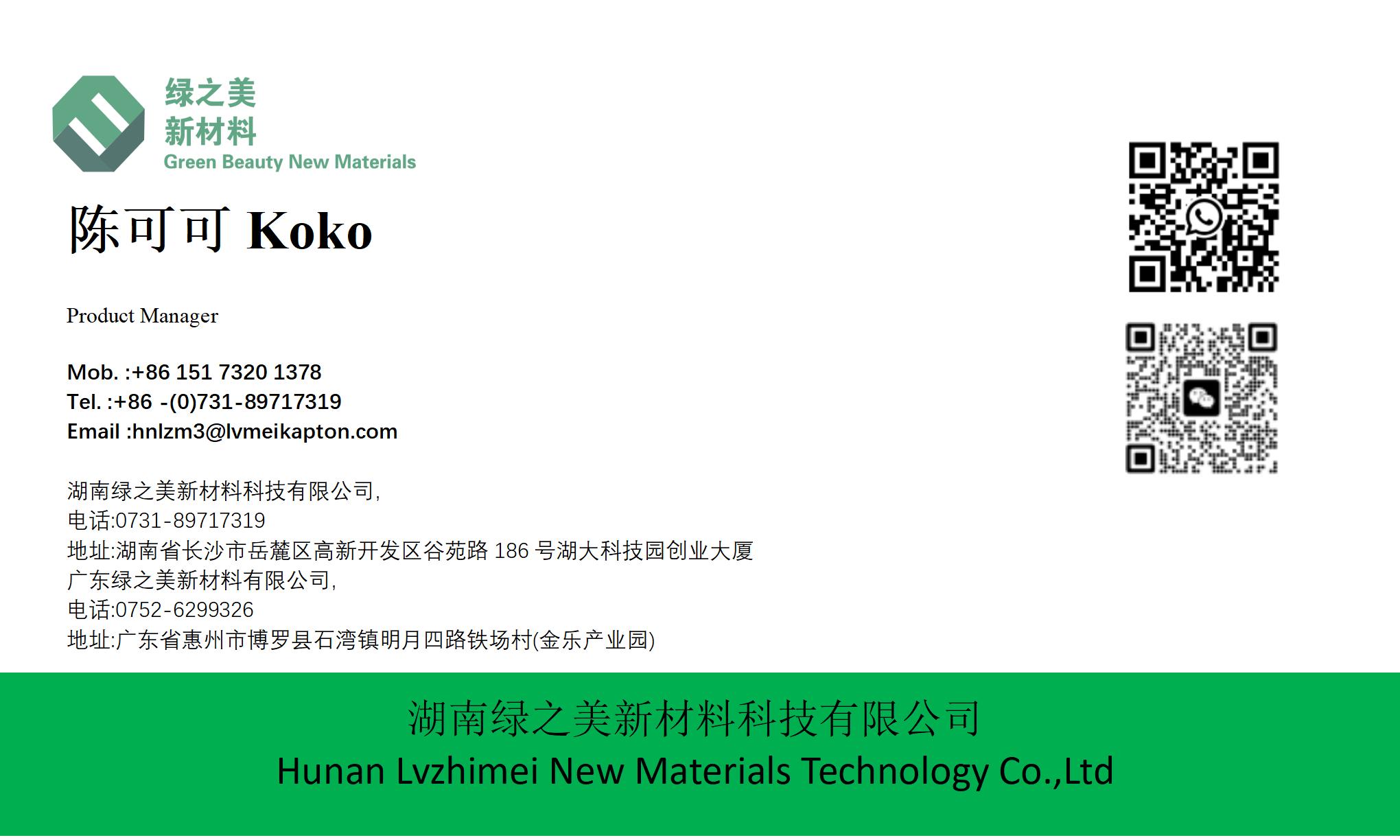hnlzm@lvmeikapton.com
+86 13787123465


Hunan Lvzhimei New Material Technology Co., Ltd.


NameDescriptionContent
Which High Temperature Tape Is Best for Circuit Board Protection? | https://www.lvmeikapton.com/
Source:
|
Author:Koko Chan
|
Published time: 2025-07-22
|
9 Views
|
Share:
PI material, short for polyimide, is a kind of high-performance engineering plastic featuring excellent properties such as high-temperature resistance, corrosion resistance, and insulation. It boasts a remarkable heat resistance, capable of withstanding temperatures up to 400℃ and maintaining stability in the range of -269~ 260℃ for prolonged use, with some variants even lacking a distinct melting point.

1. Introduction1.1 Importance of High-Temperature Tape in Circuit Board ProtectionCircuit boards, as the core components of electronic devices, require robust protection to ensure stability and reliability. High-temperature tapes play a crucial role in this protection by providing defense against high temperatures, corrosion, mechanical damage, and other hazards.
During the manufacturing process, circuit boards undergo high-temperature processes such as soldering and wave soldering. High-temperature tapes prevent substrate deformation, protect non-soldering areas from molten materials, and maintain dimensional accuracy. In maintenance, these tapes isolate moisture, dust, and corrosive gases, buffering mechanical impacts and preventing circuit short-cuts through insulation. Their performance directly impacts the longevity, safety, and functionality of electronic devices.
2. Common Types of High-Temperature Tape2.1 Brown Circuit Board High-Temperature TapeThis tape is widely used in circuit board protection, featuring a polyimide (PI) or polyester film substrate with silicone or acrylic adhesive.
Key Features:
●
Temperature Resistance: Withstands 120°C to 260°C, suitable for standard soldering processes.
●
Insulation: PI and polyester substrates offer excellent electrical insulation, preventing short circuits.
●
Adhesion: Strong adhesion from silicone or acrylic adhesive ensures stability during vibration or thermal cycling.
●
Cost-Effective: Ideal for consumer electronics where cost and performance balance is critical.
2.2 PI Material Tape with 300°C ResistanceThis tape utilizes polyimide (PI) as the substrate, renowned for its exceptional thermal and mechanical properties.
Key Features:
●
Extreme Temperature Resistance: Long-term use at -269°C to 260°C, with no melting point.
●
Insulation and Chemical Resistance: High insulation and resistance to chemicals, suitable for harsh environments.
●
Flexibility: Maintains integrity under thermal expansion/contraction and mechanical stress.
●
Application: Ideal for aerospace, industrial control, and high-reliability equipment.
3. Performance Evaluation of High-Temperature Tape3.1 Assessment of High-Temperature ResistanceTesting methods include thermal aging (e.g., 150°C/200°C exposure) and tensile tests at elevated temperatures. Key indicators:
●
Temperature Range: Short-term vs. long-term resistance.
●
Mechanical Integrity: Strength and elongation retention after high-temperature exposure.
3.2 Impact of Insulation Performance on Circuit Board ReliabilityInsulation failure due to poor tape performance can lead to short circuits, signal interference, and device malfunction. High-density circuit boards require tapes with high resistivity and stable insulation properties, especially in humid or high-temperature environments.
3.3 Effect of Adhesion StrengthAdhesion strength affects tape retention during manufacturing and operation. Factors include adhesive type, surface contamination, and temperature cycling. Weak adhesion can cause tape peeling, exposing circuits to hazards.
4. Comparative Analysis of Different High-Temperature Tapes4.1 Comparison of High-Temperature Resistance
Tape Type | Temperature Range | Key Features |
Brown Tape | 120°C - 260°C | Stable for standard processes, cost-effective. |
PI Tape | -269°C - 300°C | Ultra-high temperature resistance, suitable for extreme environments. |
4.2 Comparison of Insulation Performance
Parameter | Brown Tape | PI Tape |
Dielectric Strength | Good | Excellent |
Volume Resistivity | 10^12 Ω·cm | >10^15 Ω·cm |
Humidity Resistance | Moderate | Superior |
4.3 Comparison of Adhesion Strength
Tape Type | Adhesion at RT* | Adhesion at 150°C |
Brown Tape | High | Slight degradation |
PI Tape | Very High | Maintains stability |
*RT: Room Temperature
5. Practical Application Scenarios5.1 Requirements for High-Temperature Tape in Different Scenarios
●
Consumer Electronics (Smartphones, PCs): Moderate temperature resistance, thin profile, cost-effective.
●
Industrial Control (Automation, Power Devices): Chemical resistance, long-term durability in harsh environments.
●
Aerospace/Defense: Ultra-high temperature resistance, lightweight, high reliability.
5.2 Applicable Scenarios for Each Type of Tape
●
Brown Tape: Ideal for solder masking during PCB assembly in consumer electronics.
●
PI Tape: Preferred for aerospace avionics, high-temperature motor insulation, and industrial equipment subjected to thermal cycling.
6. Conclusion and Recommendations6.1 Summary of Advantages and Disadvantages
Tape Type | Advantages | Disadvantages |
Brown Tape | Cost-effective, suitable for standard processes. | Limited high-temperature durability, adhesive degradation over time. |
PI Tape | Ultra-high temperature resistance, superior insulation, chemical resistance. | Higher cost. |
6.2 Recommendations for Selecting High-Temperature Tape
1.
Consumer Electronics: Opt for brown tape for cost-effectiveness and adequate performance.
2.
Industrial/High-Reliability Applications: Choose PI tape for extreme environments and long-term stability.
3.
Aerospace/Defense: Prioritize PI tape for its lightweight and reliability, despite higher costs.
Incorporated Charts and Figures
1.
Table 1: Comparative Performance Summary (See above)
2.
Figure 1: Application Scenario Map (Diagram showing device types vs. tape requirements)
3.
Graph: Temperature Resistance Comparison (Line graph depicting retention of mechanical properties vs. temperature)
Appendix: Technical Specifications(Include detailed data tables for specific tape models, e.g., ASTM test results, adhesive types, thicknesses.)
ConclusionSelecting the appropriate high-temperature tape requires balancing performance demands, environmental conditions, and cost constraints. Understanding tape properties and application-specific requirements ensures optimal circuit board protection and device reliability.


Hunan Lvzhimei New Material Technology Co., Ltd.
Quick Links
Product Categories
© 2024 Hunan Lvzhimei New Material Technology Co., Ltd.All Rights Reserved. Designed by Erge
0731 - 89717319
hnlzm@lvmeikapton.com
+86 13787123465
Room 502, Chuangye Building, No186, Guyuan Road, High-Tech District, Changsha, Hunan, China
CONTACT



